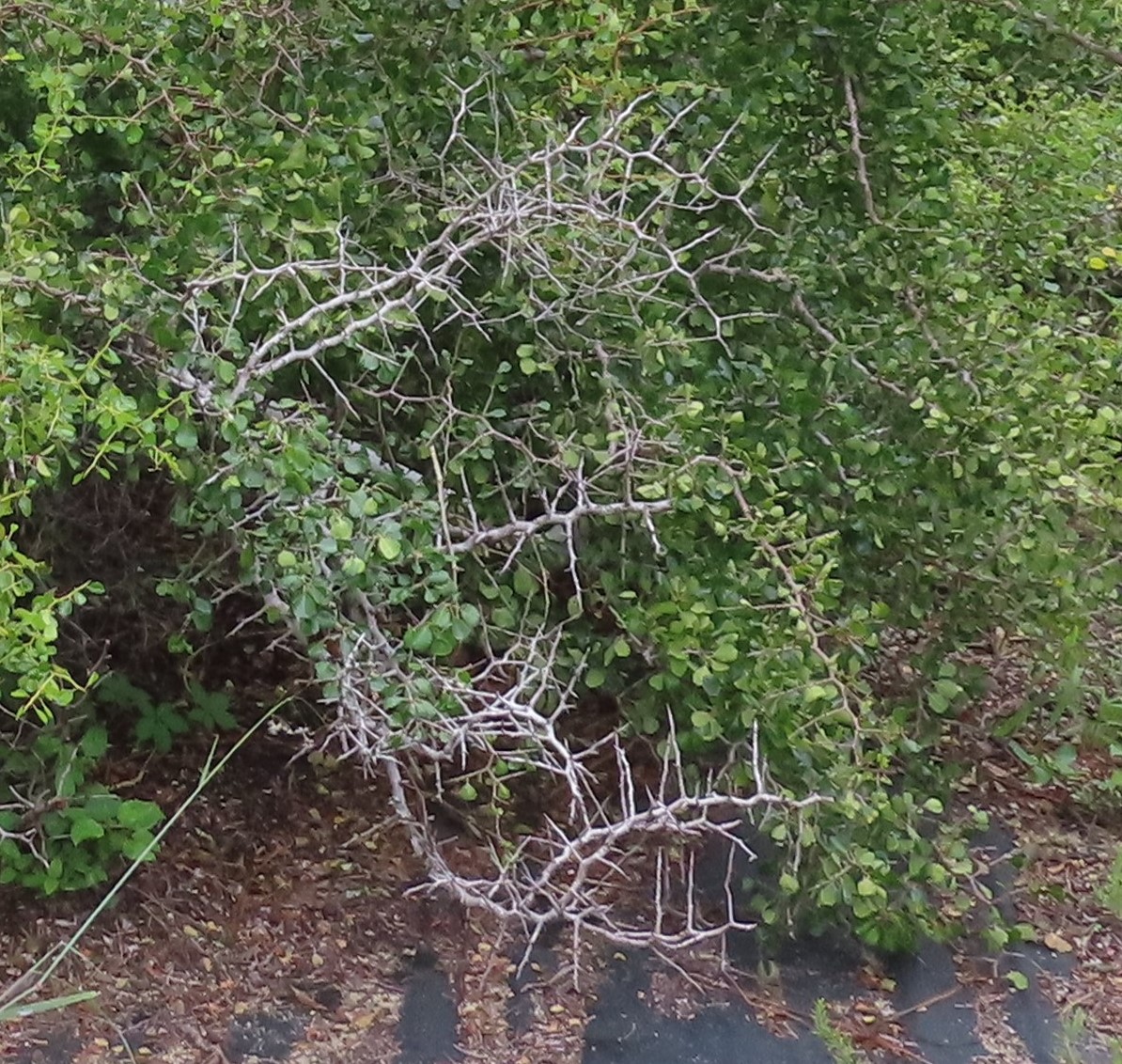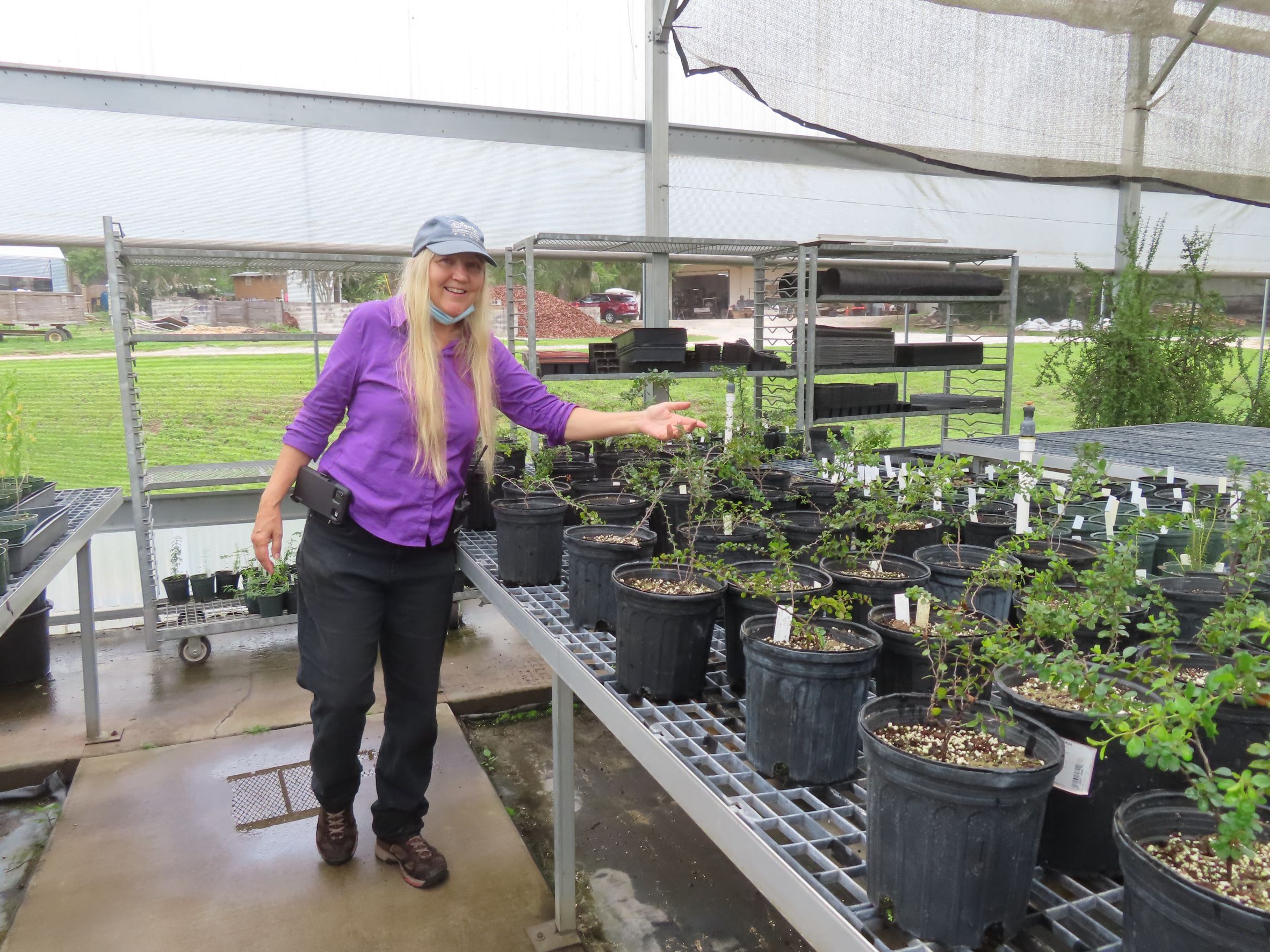
Florida ziziphus may be the Jurassic Park of the plant kingdom. When botanists first described it in 1955, they thought the scrubby-looking plant with inch-long thorns was extinct. It was “rediscovered” on the Lake Wales Ridge in 1987 and is now considered to be one of the rarest and most imperiled plants in the state.
Propagating ziziphus is easier said than done, says Cheryl Peterson, director of the Rare Plant Conservation Program at Bok Tower Gardens, which houses the National Collection of Endangered Plants for central and north Florida. It turned out that each of the six small populations eventually found were genetically identical and therefore unable to produce viable seeds. “They had loads of flowers but no seeds,” Peterson said.
And while they prolifically spread by suckers that can pop up a dozen feet away, the suckers are difficult to root so they cannot be transplanted into an area where they could naturally reproduce.

That’s changing at the Bok Towers’ Endangered Plant Garden where seeds are produced from genetically different parents and carefully nurtured until they can be planted on publicly owned land where they hopefully will reproduce on their own.
Along with the ziziphus, Bok Towers specializes in protecting and preserving Florida’s native mint plants, which require a totally different strategy. The mints (Dicerandra) – six species that actually taste and smell very differently – easily reproduce from seeds but must be protected from each other so they don’t interbreed and create hybrid seedlings that wouldn’t naturally exist in the wild.
“We grow them by cloning individual plants and then discarding any seeds we find in the garden,” Peterson said.
Much of Peterson’s ongoing work is through the Center for Plant Conservation (CPC), a not-for-profit network of about 50 conservation partners, including three in Florida: Bok Towers in Lake Wales, Marie Selby Gardens in Sarasota, and Fairchild Botanical Gardens in Coral Gables.

Along with the challenges of learning how to help imperiled plants reproduce, CPCs also are charged with rescuing rare plants before their habitat is paved over. Peterson works with a team of volunteers and professionals from other organizations to identify and rescue rare plants, but even that can be difficult.
With government agencies, particularly the Florida Department of Transportation, access to sites that may contain rare or endangered plants is available, but rescuers must obtain the landowner’s permission as well as state and federal permits even to search for rare plants on lands being developed by private owners, Peterson said.
“We always stress that we’re not trying to stop the development but once a plant is gone, it can never be saved.”
Even transplanting the rescued plants at Bok Towers can be tricky because many native plants have evolved within a symbiotic microbiome they need to thrive. That means rescuers also take native soil with each plant, which is then sifted and stored in carefully labeled five-gallon buckets.
Planting for the Future
Along with the Endangered Plant Garden and space in the Bok Towers greenhouse, the CPC includes a series of storage areas for seeds from endangered plants. Some are stored at room temperature, others are refrigerated and some are stored cryogenically with nitrogen replacing oxygen at very low temperatures.

“Every year we run a small number of seeds through a germination trial so we can learn what temperature is best for storing each species,” Peterson said. Then, along with testing to see which storage technique is most effective, the lights, temperature and humidity are varied in the germination chamber.
Some of the germinated seedlings are grown out in the greenhouse and then transplanted back to protected lands that are similar to the sites where they were found. In some cases, seeds collected from plants growing in the garden are grown out on publicly owned property – which also is tested to see if they do better if they’re planted in July, when they would naturally ripen, or January, when they would actually sprout.
Publicly owned land is the key factor for the survival of the ziziphus and other endangered plants, Peterson said. “Florida ranks behind only California and Hawaii in the number of plant species listed as threatened or endangered,” she said. “What we can’t save now may be lost forever.”
If you go: Bok Tower Gardens is located in Lake Wales, about 60 miles from Tampa. The Endangered Plant Garden provides an opportunity to see some of Florida’s rarest plant species. Approximately 30 species from north and central Florida are displayed, including Godfrey’s blazing star (Liatris provincialis), Britton’s beargrass (Nolina brittoniana), Lakela’s mint (Dicerandra immaculata),four-petal pawpaw (Asimina tetramera) and Florida goldenaster (Chrysopsis floridana).
Admission to the entire 50-acre garden, designed by landscape architect Frederick Law Olmsted, Jr. in the 1920s, is $15 per person.
